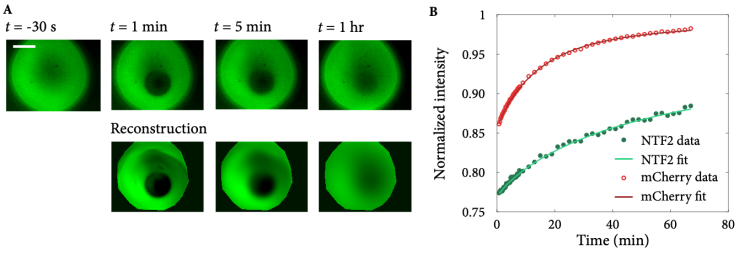Bound-state diffusion due to binding to flexible polymers in a selective biofilter
Laura Maguire, Meredith D. Betterton, and Loren Hough (2020). Biophysical Journal,118, 376. bioRxiv DOI:10.1101/736942. DOI: 10.1016/j.bpj.2019.11.026. Download.

Selective biofilters are used by cells to control the transport of proteins, nucleic acids, and other macromolecules. Biological filters demonstrate both high specificity and rapid motion or high flux of proteins. In contrast, high flux comes at the expense of selectivity in many synthetic filters. Binding can lead to selective transport in systems in which the bound particle can diffuse, but the mechanisms that lead to bound diffusion remain unclear. Previous theory has proposed a molecular mechanism of bound-state mobility based only on transient binding to flexible polymers. However, this mechanism has not been directly tested in experiments. We demonstrate that bound mobility via tethered diffusion can be engineered into a synthetic gel using protein fragments derived from the nuclear pore complex. The resulting bound-state diffusion is quantitatively consistent with theory. Our results suggest that synthetic biological filters can be designed to to take advantage of tethered diffusion to give rapid, selective transport.

